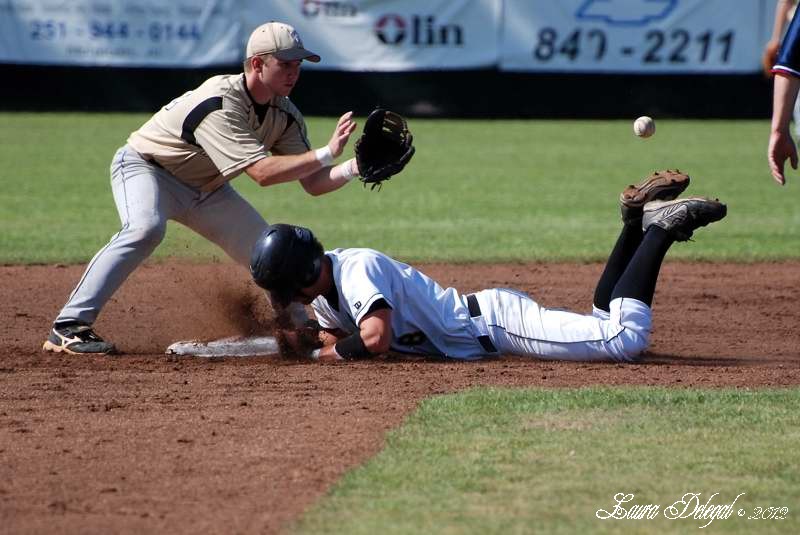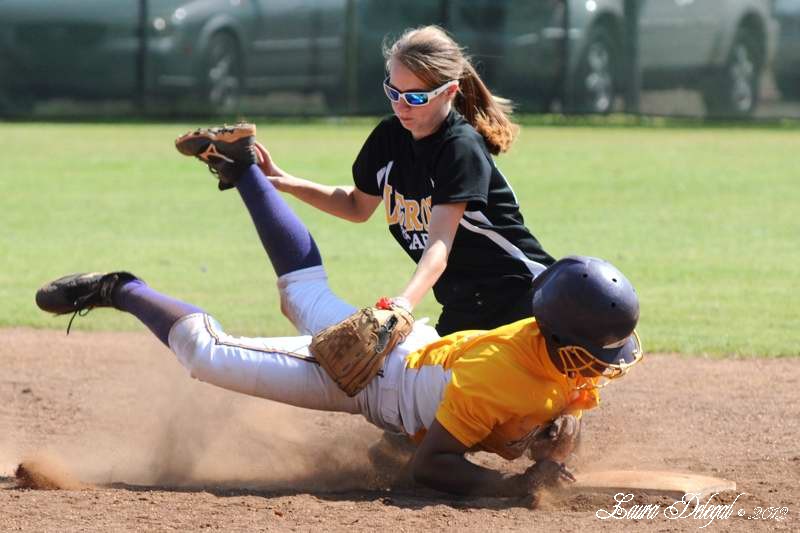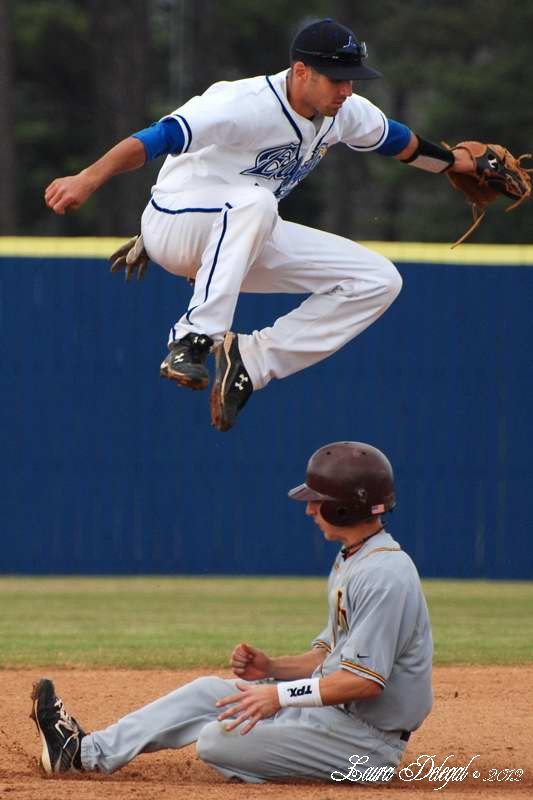ANTICIPATION AND REACTION
Know Your Sport. Covering any sport requires anticipation and reaction. If you don’t know what’s going to happen, you don’t know how to react. If you don’t understand the game, then it’s hard to do either. Using baseball as an example: If there is a runner at first, you know that he will probably steal to second. You can either anticipate that the pitcher is going to try to throw the runner out at first or the runner is going to steal to second.

Know the Rules, Including Those Governing the Photographer. There are designated areas for photographers on the field and on the court. These areas are set aside to protect you and the players, but be mindful that these areas aren’t necessarily "safe." The longer you cover sports, the more likely you are to get hit, smacked, run over, and stepped on. I’ve been beaned with a baseball while in the photographer’s box and I’ve been plowed over by football players while in the "safety zone." Always be aware when the ball is in play and anticipate the action. There are some rules that come into play if the ball is hit into the box with the photographer. You can affect a softball game if you touch the ball or step out of the box, so always be aware. You don’t need a bunch of angry parents chasing you down after the game.

Be in the Right Location. Even the Sports Illustrated pros will tell you that they miss the action because they’re not in the right location. That is why you have to do everything you can to be at the right place and the right time and to have the right amount of luck. This isn’t always easy because players, coaches, referees/umpires, equipment, fences, and fans can block your view. I can’t tell you how many times I’ve wanted to tackle the referee ("zebra") or umpire because he/she stepped into and blocked that "perfect" shot. This calls for some creativity. If you’re blocked by a fence, get a small ladder or step stool to look over it or ask the coach if you can shoot from the dugout. If you don’t block anyone’s view, shoot from the backstop. Unless you have a very powerful lens, football can be the most challenging. With a 400mm or 600mm lens, you can station yourself in the endzone and never move, but, if you’re someone like me with a 200mm or 300mm, you’ll be trekking from one side of the team box to the other, trying to stay ahead of the action, so make sure you have your tennis shoes on.

Anticipate and React. Players can sometimes give away their next move. A pitcher’s or quarterback’s eyes can reveal a lot, as can their body language. A subtle step from one side to anther by one of the infield players can tell where they anticipate the next play to be. If a runner is on third, the coach is going to do everything he/she can to get the player in to home. Watch for reaction too: the facial tics of the pitcher or the batter, the emotion of the coach or players after a good or bad play. With enough practice, you can learn to keep both eyes open, one to ensure you’re ready to take the shot and the other to watch other aspects the game.
EXECUTION
The Shot: The ideal sports photo shows action and includes the players eyes and the ball. Of course, you won’t always get the "ideal" photo, but that’s what you’re striving for. Don’t forget to get some wide-angle shots to capture your surroundings, including fans, cheerleaders, band members, players on the sidelines, or even sunsets or moonlight over the field.
Keep it Tight. It’s always good to shoot a balance of loose and tight shots. When in doubt, go loose because you can always crop. But the tight shots pull you in closer and capture details often missed with a looser shot.
Composition. Sometimes it is helpful to change your focus point in the viewfinder in anticipation of the action. For example, if the pitcher is throwing from right to left, move your focus point a few places to the right of center in order to capture his full follow-through. If football action is moving from left to right, move your focus point a few places to the left of center in order to more fully capture movement of the action. Tip: Since so many of us use medium format (DX) cameras, we need to optimize our shot. Instead of keeping the focus point in the center and having to crop out the empty space above a players head, move the focus point a spot above the center and keep it focused on the player’s face, not his/her chest.

Pre-Focus. If you know where the next play will be, pre-focus and wait. For example, if you know the next play will probably be a runner stealing to second, then pre-focus on second base and wait for the action. Tip: Instead of using the shutter release button to focus and shutter, use back button (AF-ON) to focus and the shutter release shoot a general area without having to refocus. This takes some practice, but makes a big different in tracking a moving object.
Check Your Settings. It’s always good to periodically check your settings to make sure they’re still good. The sun doesn’t stay in one place in the sky, so constant adjustments must be made. But don’t "chimp" by checking after every shot, especially when the ball is in play. You can always review them later. Be aware of the action and get out of the way.
Panning
Freezing (faster shutter, freezing the action) or Panning (slower shutter, following the action). To freeze the action, set your camera to sports mode or set your shutter speed priority to a high setting. Panning is a way to capture movement and have it expressed in your photos. To pan, slow down the shutter speed and follow the subject with your camera. That will isolate the subject, but give the feel of movement to the photo.
Backlighting
Backlighting. Let lighting conditions work to your advantage. While shooting with the sun against your back is great, it’s not an etched-in-stone rule that the sun must stay there. Some of my favorite photos were taken against a dark backdrop as the sun was setting, showing a wonderful outline of the player’s face or dust being kick up in the sunlight as a slide is made into second base. Good front light is also good backlight. They both give different perspectives.
Keep Shooting, Rain or Shine. Keep shooting even if it’s raining or snowing, but always make sure your equipment is protected. Camera storm jackets are inexpensive and easy to carry.
Be on the Lookout for "Moments". Watch for the shots that tell a story outside the game. Sometimes it's the simple comradery between players or fans, discussions between coaches and umpires, or just miscellaneous fun.
Avoid Using Flash. Flash is often strictly prohibited in college and professional sports because it can distract the players and make the coaches go crazy--and I don’t like crazy coaches. But there are some exceptions. In our area, flash is often used during indoor sports and football games. I don’t know how to use a flash, so that is never an issue with me. To be safe, check with the coaches or the school’s athletic director to ensure no one gets upset when the flashes start popping.
See Also Part One - Preparation: Before the Action


































